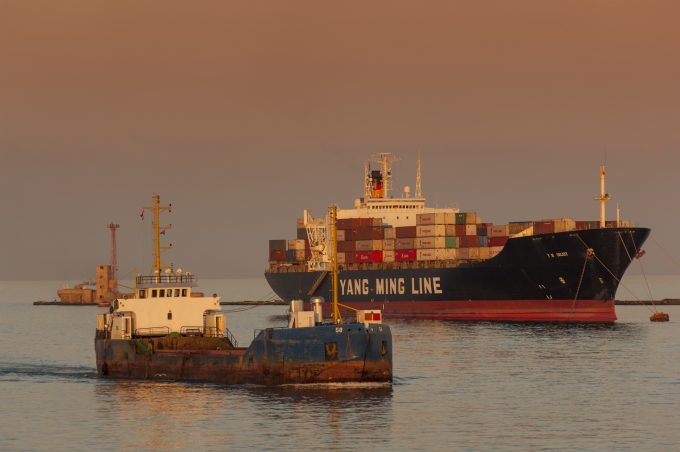HMM sees opportunities in Hapag-Lloyd’s exit from THE Alliance
HMM CEO Kim Kyung-Bae believes Hapag-Lloyd’s departure from THE Alliance will be a big opportunity ...

“Alliances are only as stable as their member carriers,” was maritime consultant Drewry’s first comment on plans to create a third mega-grouping.
On Friday, Hanjin Shipping, Hapag-Lloyd, K Line, MOL, NYK and Yang Ming announced an initial five-year “binding agreement” to form THE Alliance on east-west trades in April 2017.
The six lines were described by Drewry as the “orphans” of the recently announced Ocean Alliance grouping of CMA CGM, Cosco, Evergreen and OOCL. Currently members of the G6 and CKYHE alliances, they will operate a combined fleet of approximately 3.5m teu, an 18% share of global container capacity.
Excluded from the deal was UASC, currently involved in merger talks with Hapag-Lloyd, but eventually expected to become part of THE Alliance, and HMM, which is in the process of restructuring its debts, but also has ambitions to join the grouping at a later stage.
Meanwhile, Drewry has suggested that the new, alliance may have “too many cooks”, compared with the 2M’s Maersk and MSC and the Ocean Alliance’s four carriers.
Indeed, a source at one G6 carrier admitted to The Loadstar recently that its decision-making process involving six members was “time-consuming and tedious” – particularly when trying to get a consensus on schedule changes.
And should UASC not merge with Hapag-Lloyd and HMM is also accepted into the fold, the workings of THE Alliance could potentially become even more unwieldy.
Drewry suggests that a way to improve the speed of communication and decision-making would be to form a single independent operational unit, similar to the proposed London operational headquarters of the aborted P3 alliance. But it cautioned that would, similarly, risk being knocked back by Chinese regulators concerned about antitrust implications.
Nevertheless, according to Hapag-Lloyd CEO Rolf Habben Jansen, the philosophy of the new alliance will be different and look at “every possible angle to work together” and “look beyond port to port” co-operation.
Following suggestions that the move from four to three mega-alliances would be bad news for shippers, Drewry pointed out that shippers should have nothing to fear, “as there will still be at least 12 competing carriers and sales organisations behind these operating alliances”.
It added: “While some uncertainty has been removed from the market it should be remembered that alliances are only as stable as their member carriers so they should not be seen as the silver bullet that will save the industry,” concluded Drewry.
Comment on this article
Martyn Benson
May 16, 2016 at 1:50 pmNevertheless, according to Maersk CEO Rolf Habben Jansen, ?????????
I thought he was boss of HALO?
David
May 16, 2016 at 2:00 pmQuick typo correction:
“Nevertheless, according to Maersk CEO Rolf Habben Jansen…”
Should read “…Hapag-Lloyd’s CEO…”.
Any idea why they are capitalizing THE? Does it stand for something, or are they just yelling??
Alex Lennane
May 16, 2016 at 2:05 pmApologies – and thanks to everyone who pointed the mistake out.
We think the capitalised THE must be to differentiate between the other alliances – “in the absence of anything more imaginative,” says Mike.
gunther ginckels
May 16, 2016 at 2:05 pmRolf Habben Jansen is the CEO of HL – not Maersk. Apart from that he is 100% right. Next move will be a quantum leap beyond the quaywalls driven by a single operations unit consolidating equipment and landside operations. There is no reason to maintain individual landoperations and fragmented operations when jointly operating ships, equipment and multimodal operations and benefit also on land of consolidated volumes by sharing procurement power and seek balanced flows. Will they have the spine to make that move? On land – more than on sea – the rule ofr 1+1+1+1+1 will not be 5 but merely 3. 40% savings on operational backoffice expenditure cannot be ignored. I did it before – I can do it again 🙂